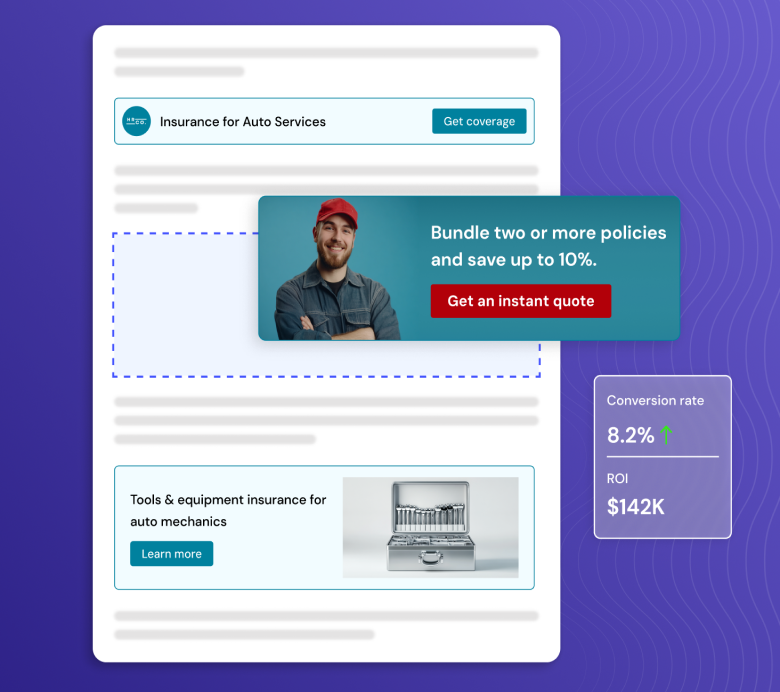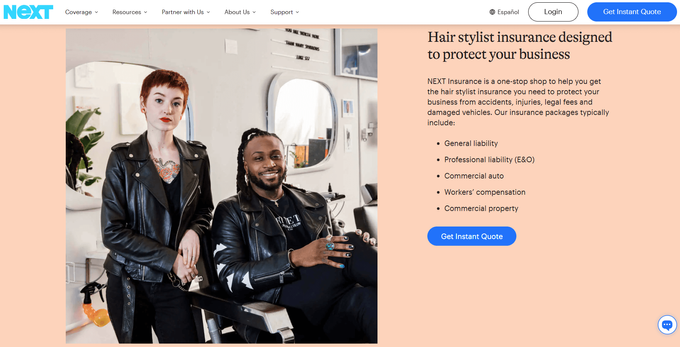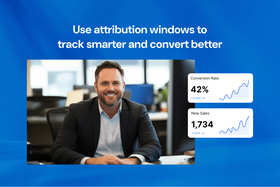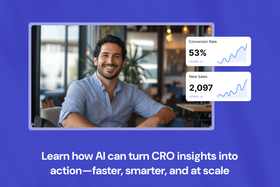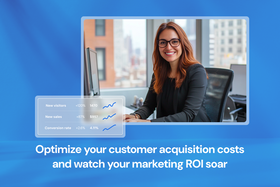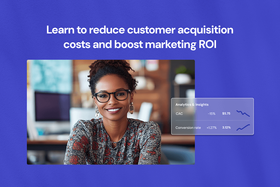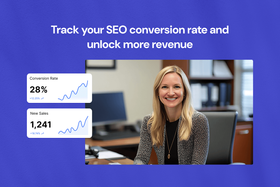9 ways to optimize your site for conversions & skyrocket sales
Improve your website’s performance and boost conversions with these proven strategies.
Published November 27, 2024
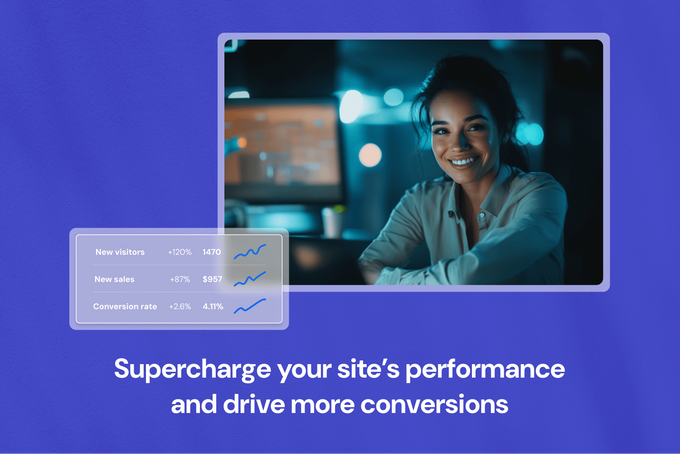
You've worked hard to drive traffic to your site, but if those visitors aren't converting, you're leaving money on the table. Your website is your most powerful tool for turning traffic into revenue, so failing to optimize it properly means missing out on some serious opportunities to maximize ROI. In this article, we'll share a few tried-and-tested strategies to transform your site into a conversion-generating machine.
Key takeaways
- Every visitor has the potential to convert with the right CRO strategies in place.
- Optimize your website for search before optimizing for conversions.
- Focus on helping users reach the next logical step in their journey while guiding them through the funnel to conversion.
1. Define your funnel
The first step is to clearly define your funnel or the journey you want users to follow on your site. More often than not, users need to go through more than one step or exposure before converting. So, ask yourself: Which touchpoints should users interact with on their journey to conversion?
For example, should the user find your blog article, visit a product page, book a demo, and then sign up? Maybe the path to purchase is more straightforward. Whatever the case, you need to map out the exact funnel you want users to follow. Often, there may be more than one funnel, so define each one and build everything—your campaigns, creatives, and touchpoints—to support it. Everything must align to meet the user's needs and create an optimized user journey.
» Discover all you need to know about the conversion funnel.
2. Determine what you count as a conversion
A conversion occurs when a user completes a desired action, but this looks slightly different for every business. You need to define what you consider to be a conversion. For example, a few types of conversions include:
- Booking a demo
- Making a purchase
- Downloading an app
- Creating an account
- Subscribing to a newsletter
- Downloading a guide
Different types of conversions can happen at different funnel stages, so most websites have multiple conversion goals. Define your conversion goals for each step of the funnel clearly. Be sure to prioritize and quantify these goals to lay the groundwork for optimizing your funnel effectively.
» Boost sales with these conversion strategies.
3. Get to know your target audience
To optimize your site for conversions, find out where your target users are and, more importantly, where they have intent. For example, if you're selling a CMS to a marketing manager, knowing where they're having lunch isn't helpful because they aren't in the right mindset to engage with your message. Instead, focus on places where they show intent, like LinkedIn groups or Twitter threads discussing CMSes.
Once you've identified the right location and intent, provide them with a relevant value proposition that grabs their attention and motivates them to move to the next step in your funnel.
» Leverage user journey mapping to learn more about your audience.
4. Guide users through the funnel toward conversion
Help users move through the funnel by building trust, fostering engagement, and addressing their needs at each stage. As they navigate the funnel, clearly communicate the value proposition for each stage and lead them to the next logical step in their journey.
» Learn more about the stages of the user journey.
For example, if you're selling online therapy, users may first want to understand the causes of anxiety at the top of the funnel. Next, they may explore treatments for anxiety in the middle of the funnel, and finally, they'll look for a solution tailored to them once they reach the bottom of the funnel—like a free online therapy session.
5. Analyze and target the right keywords
You need to understand what your bottom-of-the-funnel keywords are—search terms with high purchase intent. For example, if you sell insurance, your bottom-of-the-funnel keywords might include "car insurance" or "home insurance in Milwaukee." These keywords target users who are ready to convert.
You can create landing pages tailored to each of these keywords. For example, Next Insurance built pages for every type of small business they insure, such as "landscaping insurance" and "hair stylist insurance."
Analyze the query classes you're targeting and build the right page for each. You want pages that specifically target what people search for so you can rank well.
By creating pages that target bottom-of-the-funnel keywords (a.k.a. your value proposition), you guarantee that visitors who reach these pages have a specific intent to buy what you're selling, which results in a higher conversion rate. Plus, these keywords usually represent your brand and product, so it helps Google understand what your website does.
» Learn how to generate leads with SEO.
6. Create lots of content
If information plays a large role in your funnel, you need to create a lot of content. Use these best practices to create content that converts:
Target bottom-of-the-funnel keywords first
Map out all the relevant keywords for your website and first target bottom-of-the-funnel keywords with the highest conversion potential. For example, if you sell running shoes, your bottom-of-the-funnel keywords might include "best shoes for marathon runners."
These keywords often have high competition, but to increase conversions, focus on them first, even if ranking organically is difficult. Plus, you can send more traffic to these pages by using internal linking or promoting them through other channels (e.g., social media, paid ads, or email marketing).
Create bottom-of-the-funnel content
Next, develop a variety of bottom-of-the-funnel content to target users with high purchase intent. These users often want to compare products, so you can create the following types of bottom-of-the-funnel content pages:
- Top 10 pages, such as "10 best running shoes for flat feet"
- Comparison pages, like "Nike vs. Hoka: Which is better?
- Alternative pages, like "5 Nike alternatives for long-distance runners"
- Review pages, such as "Nike Zoom Fly 6 review (2026)"
Develop content to support bottom-of-the-funnel pages
Once you have your bottom-of-the-funnel content, it's time to create mid-funnel and upper-funnel content to support it. Be sure to link from this content to your bottom-funnel pages to add authority and send traffic to them. For example, an upper-funnel article on how to run five miles under 40 minutes could link to a bottom-funnel article on the best long-distance running shoes.
» Optimize your SEO funnel for conversion.
7. Add contextual widgets and CTAs that support the user journey
When users encounter widgets, calls-to-action (CTAs), or links that are highly relevant to the content they're reading, they're much more likely to click. We've even found that relevant CTAs can achieve click-through rates above 45%.
For each piece of content, add compelling CTAs, links, or widgets that align closely with the context of each section or paragraph. Ensure these links not only fit the context but also guide users to the next step in their journey. This is an easy, cost-effective way to boost click-through rates and conversions.
8. Address user fears and objections
Today, users demand quality and trustworthiness. Simple ads or single-touch strategies rarely convert. People need to feel confident in a product, especially in a world where you can create anything with AI.
So, make sure you proactively address the potential objections or fears users might have while clearly articulating the value of your product. Focus on understanding where the user is in the funnel, attracting them with relevant messaging, getting rid of doubts that prevent them from moving forward, and creating touchpoints to guide them through the journey—e.g., social media, email, case studies, advertising, or word of mouth.
» Explore even more CRO best practices.
9. Optimize the technical aspects of your website
Before optimizing for conversions, you need to optimize your website for search and make sure it's working properly. Without traffic, it's impossible to get conversions. Prioritize these technical elements to improve user experience and ensure your site gets crawled and indexed by Google:
- Site speed: Fast-loading pages reduce bounce rates and keep users engaged.
- Navigation: Simple, intuitive menus help users find what they need quickly.
- Schema markup: Add structured data to help search engines understand your content and improve visibility in search results.
- Mobile experience: Ensure your site is mobile-friendly, as 63% of searches happen on mobile devices.
This way, you create a seamless experience for users and improve your site's visibility so you can bring in the traffic necessary to drive conversions.
» Publish content on optimized web pages with Entail's page builder.
Unlock your site's full potential
Every visit to your site has the potential to become a conversion—but without a solid conversion rate optimization strategy, that potential can go unrealized. By understanding your audience, addressing their needs at every stage of the funnel, and creating a seamless user experience, you set the foundation for higher conversions. With the strategies above, you can turn potential into measurable results and drive meaningful growth for your business.
